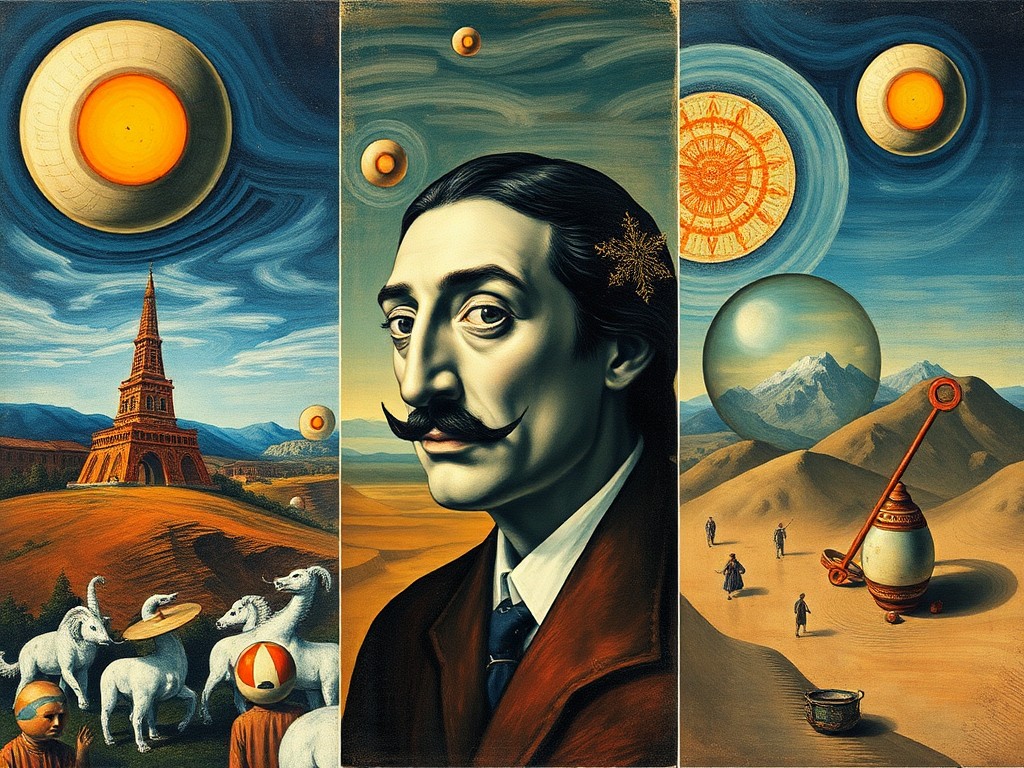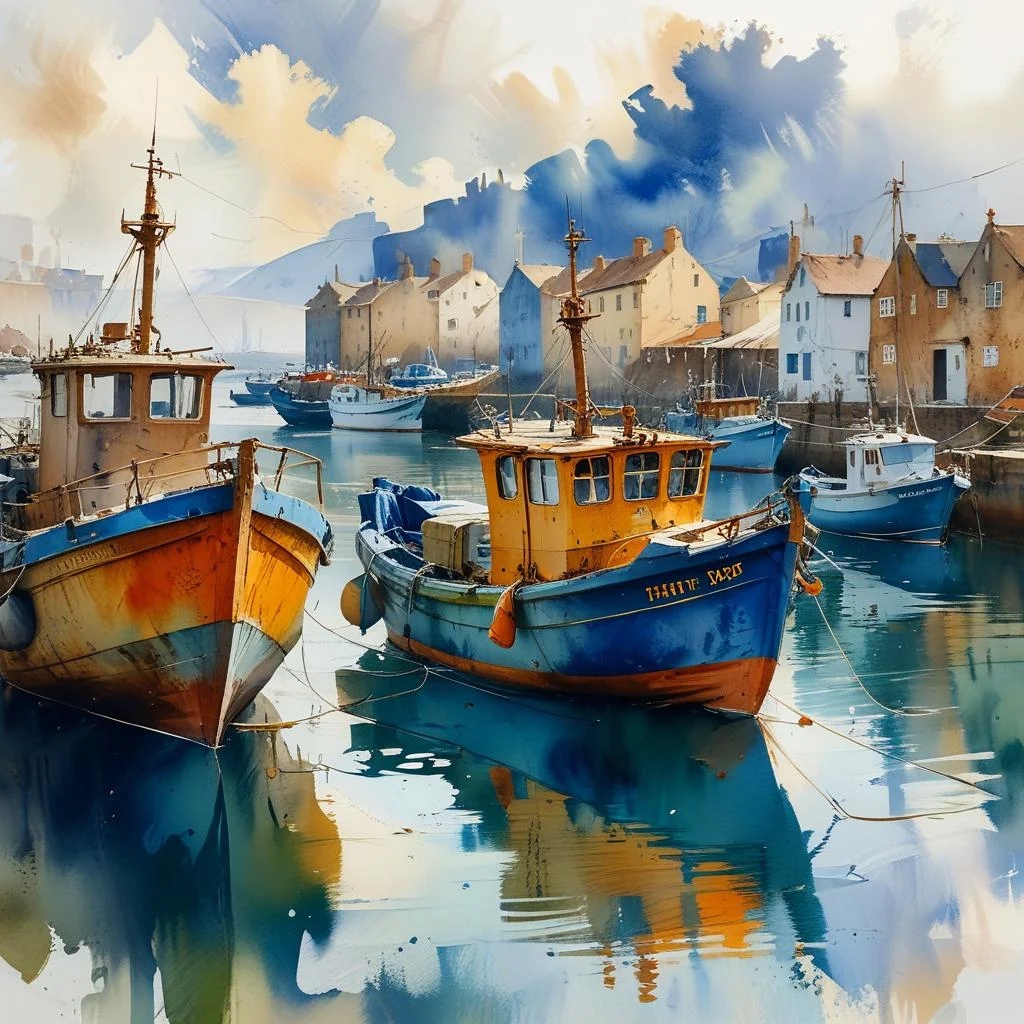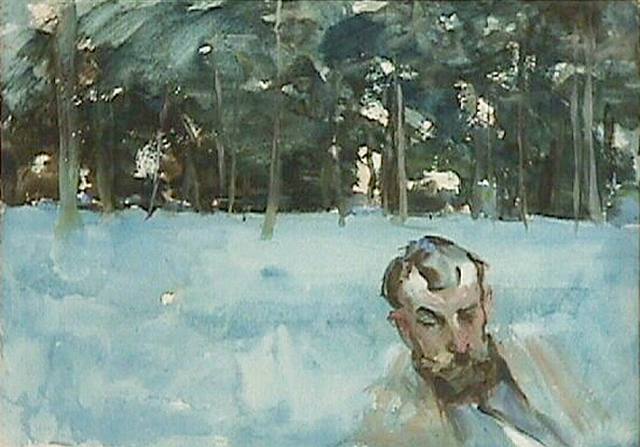Salvador Dali was a Spanish surrealist artist known for his striking and bizarre paintings that continue to fascinate art lovers to this day. With a career spanning over six decades, Dali created over 1,500 paintings – here we feature our selection of the Top 10 Salvador Dali paintings – many of which are considered masterpieces of modern art.
Listen to our Podcast on Salvador Dali Paintings
In this article, we’ll take a journey through 10 of the most mind-blowing Salvador Dali paintings that showcase his unique style and artistic genius.
1. The Persistence of Memory (1931)
One of Dali’s most famous paintings, The Persistence of Memory, features melting clocks and other surrealistic objects in a dreamlike landscape. This painting is a prime example of Dali’s ability to challenge our perceptions of time and reality.
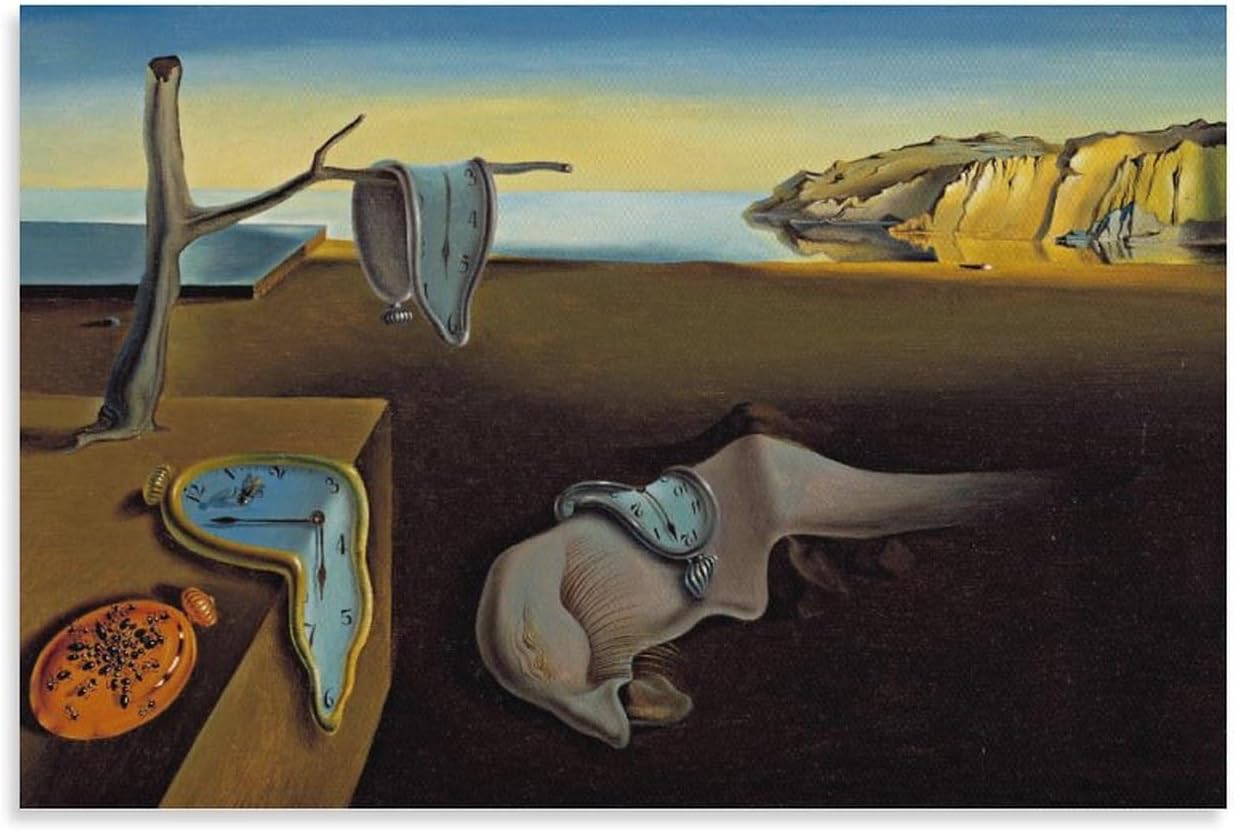
2. The Elephants (1948)
In The Elephants, Dali depicts a group of elephants with elongated legs and bodies that seem to be melting into the ground. This painting showcases Dali’s use of symbolism and his ability to create a sense of unease and discomfort in the viewer.
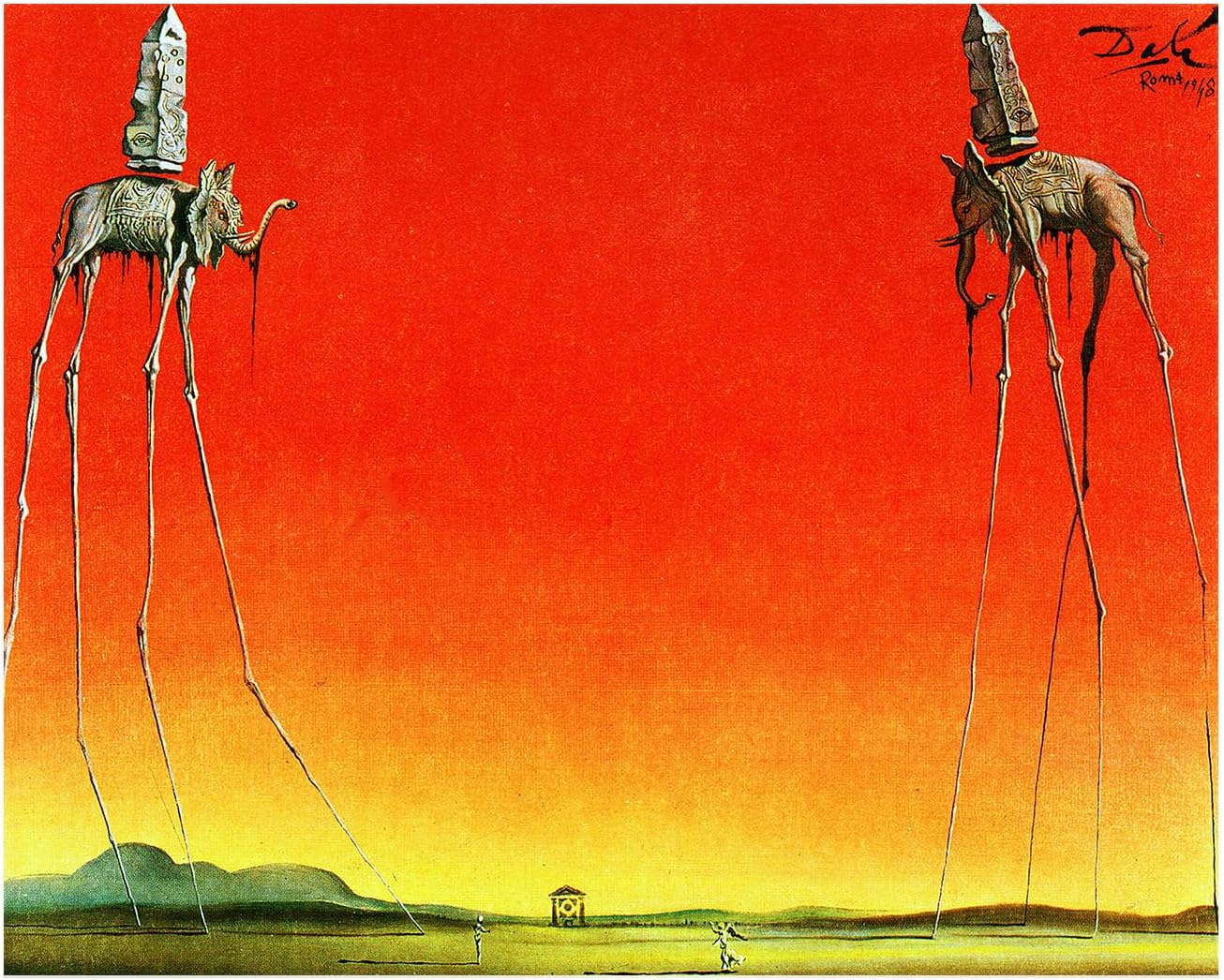
3. Gala Contemplating the Mediterranean Sea (1976)
This painting features Dali’s wife and muse, Gala, gazing out at the Mediterranean Sea. The painting is a beautiful example of Dali’s ability to capture the beauty of the human form and the power of the natural world.
4. The Great Masturbator (1929)
The Great Masturbator is a painting that showcases Dali’s fascination with the human body and his ability to create a sense of tension and unease. The painting features a figure with a distorted body and a face that seems to be melting away.
5. Swans Reflecting Elephants (1937)
In Swans Reflecting Elephants, Dali creates a surrealistic scene featuring swans and elephants that seem to be reflecting each other. This painting is a great example of Dali’s use of symbolism and his ability to create a sense of depth and dimensionality.
6. The Disintegration of the Persistence of Memory (1954)
This painting is a sequel to The Persistence of Memory and features melting clocks and other surrealistic objects in a state of disintegration. This painting showcases Dali’s ability to create a sense of chaos and disorder.
7. The Ghost of Vermeer of Delft Which Can Be Used As a Table (1934)
In this painting, Dali depicts the ghost of Johannes Vermeer, a Dutch painter, sitting at a table surrounded by surrealistic objects. This painting is a great example of Dali’s use of symbolism and his ability to create a sense of mystery and intrigue.
8. The Dream (1932)
The Dream is a painting that showcases Dali’s ability to capture the power of the human imagination. The painting features a figure lying in bed, surrounded by surrealistic objects and a sense of dreamlike atmosphere.
9. The Sacrament of the Last Supper (1955)
In this painting, Dali reimagines Leonardo da Vinci’s famous painting, The Last Supper, with a surrealistic twist. The painting features Jesus and his disciples surrounded by melting objects and a sense of chaos and disorder.
10. The Atomic Leda (1949)
The Atomic Leda is a painting that showcases Dali’s fascination with science and technology. The painting features a figure from Greek mythology, Leda, surrounded by atomic symbols and a sense of chaos and destruction.
Salvador Dalí inspired Artists and Creators
Surrealism and Imagination: Dalí was one of the leading figures in the surrealist movement. His works often featured dream-like scenes and bizarre, fantastical imagery, which encouraged other artists to explore the unconscious mind and delve into imaginative realms.
Symbolism and Technique: Dalí’s meticulous attention to detail and use of symbolic imagery inspired artists to incorporate deeper meanings into their work. His technical skills, including realistic rendering of dreamlike motifs, set a high standard for surreal and figurative art.
Cross-Disciplinary Inspiration: Dalí was not limited to painting; he explored film, sculpture, fashion, and photography. His collaboration with filmmakers like Luis Buñuel and Alfred Hitchcock, and his designs in fashion and jewelry, showed artists the potential of interdisciplinary art-making.
Art as Performance: Dalí’s public persona and eccentric behavior were as famous as his art. He treated his life as a continuous performance, inspiring artists to merge life and art and consider personal identity as part of their creative expression.
Blurring Reality and Fantasy: His ability to blur the lines between fantasy and reality paved the way for other artists to challenge conventional perceptions and question the boundaries of the real and the imagined.
Artists inspired by Dali
Salvador Dalí has influenced a wide range of artists across different mediums and movements. Here are some notable artists who have drawn inspiration from his work:
- Max Ernst: A key figure of the surrealist movement, Ernst shared Dalí’s interest in dream imagery and the unconscious mind, often incorporating similar themes and techniques in his own artwork.
- Rene Magritte: Another leading surrealist, Magritte’s thought-provoking imagery and clever visual puzzles resonate with Dalí’s exploration of reality and illusion.
- Robert Rauschenberg: Rauschenberg’s innovative use of mixed media and “combine” paintings show an experimental approach that echoes Dalí’s boundary-blurring techniques.
- Marcel Duchamp: While primarily known for his conceptual work, Duchamp’s playful approach to art and his involvement with surrealism were likely influenced by Dalí’s explorations of absurdity and the subconscious.
- Yayoi Kusama: Known for her immersive installations and polka dot motifs, Kusama’s work reflects a surreal quality that aligns with Dalí’s dreamlike aesthetics.
- Damien Hirst: Hirst’s confrontational and provocative work draws on themes of mortality and illusion, which can be linked back to Dalí’s exploration of similar topics.
- David Lynch: In film, Lynch’s surreal storytelling and visual style are reminiscent of Dalí’s dreamlike approach, often blurring the lines between reality and fantasy.
- Nick Cave: The artist and musician incorporates theatricality and surreal elements in his performances and visual work, reflecting Dalí’s influence in embracing the unexpected.
- Chris Mars: Known for his surreal and haunting imagery, Mars’ work often echoes Dalí’s themes of dream states and psychological depth.
- Louise Bourgeois: Although her focus was different, the psychological intensity and dreamlike aspects of Bourgeois’s sculptures can also find roots in surrealist traditions that Dalí helped popularize.
These artists demonstrate the diverse ways in which Dalí’s innovative ideas and techniques have permeated various forms of contemporary art, continuing to inspire new generations of creators.
Closing Thoughts on the Top 10 Salvador Dali Paintings
Salvador Dali was a true master of surrealism, and his paintings continue to fascinate and inspire art lovers to this day. From melting clocks to surrealistic landscapes, Dali’s paintings are a testament to his unique style and artistic genius.
Whether you’re an art enthusiast or just looking for something new and interesting to explore, these 10 Salvador Dali paintings are sure to blow your mind.

